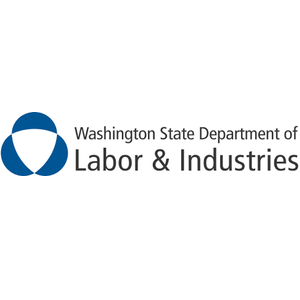
The Washington State Department of Labor & Industries (L&I) today announced a 4.9 percent increase in the average workers’ compensation premium rate for 2024.
The increase, which takes effect Jan. 1, 2024, means employers and workers will jointly pay, on average, an additional $65 a year in workers’ compensation insurance premiums for each full-time employee. Similar to last year, workers will pay about a quarter of the premium.
Employers and workers pay into the workers’ compensation system to help cover the cost of providing wage and disability benefits for injured workers, as well as medical treatment of workplace injuries and illnesses.
Every fall, L&I determines the proposed workers’ compensation rates for the following year by looking closely at several factors, including the expected workers’ compensation payouts, the size of the contingency reserve, wage inflation and other financial indicators.
“We do our best to be good stewards of this important program that helps tens of thousands of injured workers recover and return to work every year,” said L&I Director Joel Sacks. “Helping prevent workplace injuries and illness is our number one goal, yet we have to make sure that we have a healthy workers’ compensation system. This increase will help us do that so workers know they’ll have the help they need when they need it.”
L&I hosted a series of in-person and hybrid public hearings — in Spokane, Yakima, and L&I’s headquarters in Tumwater — in October to take input on the proposed 2024 rates. The agency also accepted written comments. Representatives from business and labor groups were among those who testified during the hearings.
Inflation, increased health care costs, and higher wages
Health care costs are rising, and so are wages — which means it costs more to help workers when they get hurt. The increase in premium rates is less than five percent, because for the fourth straight year, L&I is using the workers’ compensation reserve to lower the impact.
The 4.9 percent increase is an average for all industries. The rate for specific industries could be higher or lower depending on their recent claims experience.
Contingency reserves, investment income mitigate impact
To avoid major changes in rates from year to year, L&I has steadily increased the contingency reserve by carefully managing rates and investments. That way, the reserve can help offset costs when needed and keep rate increases more manageable. L&I continues to reduce the costs of the workers’ compensation program by helping prevent work-related injuries and illnesses, providing services early in the claims process, and helping injured workers recover.
Washington’s workers’ compensation system
Most states charge rates as a percentage of payroll, so when employee wages and payrolls go up, more premiums are automatically collected. In Washington, employers are charged an hourly rate. When wages go up in Washington, it costs L&I more to provide workers’ compensation benefits, mainly wage replacement and medical services. Among the ways the state covers the increase in the cost of providing coverage is to raise the hourly rates that employers and workers pay.
More information about 2024 workers’ compensation rates is available at www.Lni.wa.gov/Rates.

